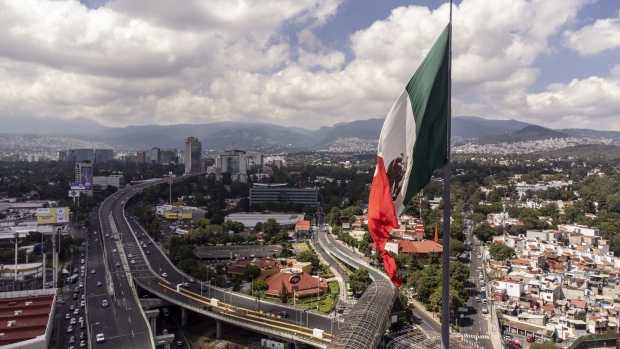Nov 15, 2023
Mexico Fintech Battle Escalates With Account Yield Ramp-Up
, Bloomberg News

(Bloomberg) -- Just a week after Brazil’s Nu Holdings Ltd announced a yield of 15% on its high-yield savings accounts in Mexico, Argentina’s Ualá is raising its own by three percentage points to 15%.
The speed of the decision highlights the frantic battle for customer acquisition that fintechs and digital banks are waging as they look to grow in Mexico, one of the largest unbanked nations in Latin America. The country has emerged as a key market for financial services startups given that less than 50% of the population has a bank account.
Read More: Credit Card Rates Reach 790% in a Once-Hot Fintech Market
At 15%, the rates are very competitive for users in Mexico, where the central bank’s key rate stands at 11.25% and the monetary authority has already telegraphed that it won’t begin easing until next year. Inflation decelerated to 4.26% in October, a 32-month low. Mexican banks don’t widely offer interest on deposits.
The companies are not alone. Mexico-based Stori also offers 15% for those who can get off of its waitlist, Mexico-based Klar offers as much as 14%, and the fintech arm of Buenos Aires-based MercadoLibre offers 10.3% interest on deposits. To help attract new clients, only one peso ($0.06) is needed to open the accounts, and some of them offer additional perks — for example, Ualá is also offering 5% in cash back.
Read More: Apple’s $10 Billion Deposits Can Spur Bank Tech-Spending Spree
Nu’s yields of 15% will be in place until April 15, while Ualá will offer them until the end of that same month, according to company statements.
Nu has 4.3 million users in Mexico, driven by the rollout and expansion of its savings account, the company said in its third quarter earnings, released after market on Tuesday. The company, which posted net income above analyst estimates, does not disclose the customer acquisition cost per individual country.
“Nu is profitable and has $3 billion of cash, so quite a warchest,” said James Friedman, senior analyst at Susquehanna International Group LLP. “They’re not yet profitable in Mexico and wouldn’t commit to when, but they don’t seem rushed.”
Incumbent Challenge
For legacy banks, competing with those high rates is not feasible given their extensive infrastructure, such as bank branches and branch employees, said Santander Mexico SA Chief Executive Officer Felipe Garcia in an interview.
“The business model is quite different. I have a large infrastructure and that’s expensive,” he said. “If I start paying those rates, I go bankrupt.”
In the meantime, the country’s large banks have the advantage of offering a wide range of financial products, including mortgages and personal loans, he added.
“We the incumbents have all the products available so we can convince users that we are just as efficient when transacting and making payments, and so forth,” Garcia said. “Fintechs are going to capture a lot of new clients in the system, willing to lend them small amounts. If those new entrants eventually want a mortgage, I can provide the mortgage.”
--With assistance from Diksha Gera and Daniel Cancel.
(Adds analyst comment in seventh paragraph and Santander Mexico CEO comment)
©2023 Bloomberg L.P.





